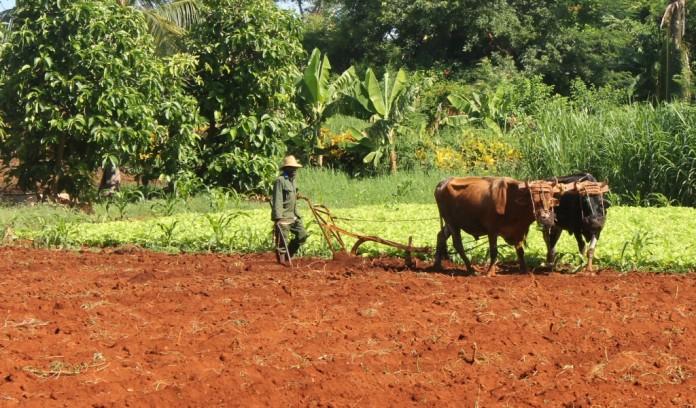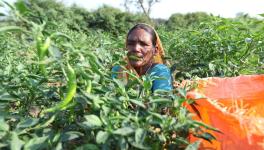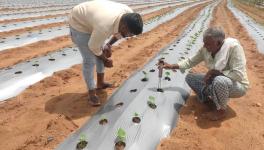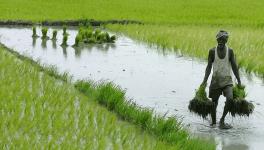Cuba’s Big New Hope For Farmers and Environment

Image Courtesy: Farm and Dairy
Cuba’s exciting agricultural progress during the last 25 years or so have given new hope to farmers and environmentalists all over the world. Cuba has managed to increase food production in adverse conditions by relying largely on eco-friendly methods, while significantly reducing the use of chemical fertilisers and pesticides.
The Cuban success story is attributed not just to eco-friendly methods, but also to the equality of its farm and land governance structures, which increased cooperation among peasants, and the scientists who work closely in cooperation with farmers. Hence the Cuban model of the last 25 years is a convincing alternative to the corporatisation of agriculture which has been pushed and promoted as a top down model in many countries including India, which brings no relief to small farmers.
In 1991, Cuba’s agriculture and food system faced a big crisis as the import of food and fertiliser from its most friendly country, on which it was heavily dependent, suddenly collapsed with the disintegration of the Soviet Union. With this collapse, Cuba lost more than 80% of its international trade by the mid-nineties.
While imports and assistance declined, pressure from its hostile neighbour, the United States, increased in various ways, including widespread economic sanctions. Pushed from all sides and facing a big decline in food production, Cuba planned to achieve self-reliance in food by using sustainable and self-reliant methods which best utilised local resources instead of relying on import. This led to the very successful and sustained application of the agro-ecology approach.
The agro-ecology approach has been much discussed since the 1970s and several farmer and environmental groups, including left-oriented groups all over the world have been implementing it with encouraging results. However, Cuba adopted it as national policy for the first time and has ensured sustained implementation over 25 years and counting.
The agro-ecology approach is based on learning from nature, and incorporating the learning of nature’s ways into farming and food production. This includes essential aspects of organic farming, but adds to it in the form of a more social (as compared to a merely technical) approach, including learning from indigenous knowledge, based on a close cooperation of scientists and people in which both are willing to learn from each other.
The earlier changes in Cuban society which moved its people towards equality, in turn empowered them and brought education and science to the masses in a big way. This helped lay a foundation for successes in other fields as well.
The inputs and technological changes included more reliance on worm humus, poultry manure and bio-fertiliser instead of manufactured chemical fertiliser. This was supported by recycling of nutrients, better and more integration of crops and animals and inter-cropping. Soil conservation received more and better attention. Many centres were set up to promote bio-control agents and other alternatives to chemical pesticides.
Pesticide poisoning cases started dropping rapidly once these changes were introduced. Favourable laws were passed for eco-friendly farming. In this way, the country which faced a “loss of imported fertilisers, pesticides, tractors, parts, and petroleum” in the nineties, and where the “situation was so bad that Cuba posted the worst growth in per capita food production in all of Latin America and the Caribbean”, as the researchers Miguel A Altieri and Fernando R. Funes-Monzote wrote in 2012, now “rapidly re-oriented its agriculture to depend less on imported synthetic chemical inputs, and became a world-class case of ecological agriculture.”
Farmers and their cooperatives were encouraged to follow the eco-friendly path through official policy as well as through movements of farmers and their organisations and federations. The approach started giving impressive results within just six years or so, and the encouraging results have been maintained since then. By 2007, food production had not just recovered but had grown significantly compared to pre-disruption levels. In the 1996-97 season, Cuba recorded its then highest ever production levels for ten out of 13 basic food crops.
By 2007, the production of vegetables was 145% compared to 1988 (pre-disruption) level, while the use of agricultural chemicals came down by 72% compared to 1988. The production of beans rose to 351% in 2007, compared to 1988 level, while using 55% less agro-chemicals. Root and tuber production increased to 145% of 1988 levels in 2007, while chemical inputs declined by 85%.
Of course, the achievements appear even more impressive when compared with disruption levels of 1991-92, but even when compared to pre-disruption levels of 1988, there are very commendable. While raising production and reducing agro-chemical use has been achieved in smaller areas by other countries, Cuba provides the foremost instance of doing so at a national level over a long period.
Agro-ecology is also more labour intensive and very creative, hence more people get an opportunity to engage in very creative livelihoods. For those so inclined, agro-ecology is a constant source of creative learning and experimentation. It can be a very creative source of science education, farming education and learning about nature for young people. The fact that this learning is so interesting and absorbing further increases its value in education both at school and college level.
This approach also helps farmers cut expenses of costly agro-chemicals. This aspect is very important at a time when farmers all over the world are struggling to reduce costs and overcome debts. In the course of these changes, farmers and scientists in Cuba realised they have much to learn from their past. Peter Rosset, who has studied Cuban agriculture very extensively has written, “In almost every case they said they had remembered the old techniques—like intercropping and manure—that their parents and grandparents had used before the advent of modern chemicals, simultaneously incorporating bio-pesticides and bio-fertilizers into their production practices.”
In another much-discussed study, Mauricio Betancourt of the University of Oregon has concluded that “...although Cuba still faces many challenges within and without the realm of agriculture.... what this country has achieved with so little external input resources, and in spite of the economic, commercial and financial United States embargo, is remarkable.”
The two senior agro-ecologists, Altieri and Funes-Monzote, have recorded what other countries can learn from Cuba on achieving a more energy efficient, sustainable, socially just and resilient agricultural system. “No other country in the world has achieved this level of success with a form of agriculture that uses the ecological services of biodiversity and reduces food miles, energy use, and effectively closes local production and consumption cycles,” they wrote in 2012 in the Monthly Review, detailing the steps taken in Cuba.
While India takes steps to “reform” its own agricultural system, it is countries like Cuba it should draw lessons from, and for obvious reasons.
The writer is a freelance journalist who has been involved with several social movements. The views are personal.
Get the latest reports & analysis with people's perspective on Protests, movements & deep analytical videos, discussions of the current affairs in your Telegram app. Subscribe to NewsClick's Telegram channel & get Real-Time updates on stories, as they get published on our website.
























